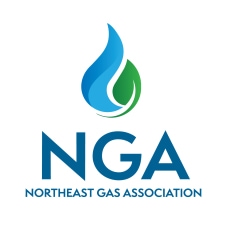Combined Heat & Power
Natural gas is a key fuel input for energy systems that represent new technologies with opportunities for reduced air emissions, higher system efficiency, and greater reliability.
Combined heat and power (CHP)
also known as cogeneration, is the simultaneous production of electricity and heat from a single fuel source - such as natural gas. Natural gas fuels the majority of existing CHP capacity in the U.S.
Total generating capacity in the U.S. from CHP is around 81 gigawatts, representing about 8% of total capacity. The greatest potential for CHP use is in such markets as commercial, institutional, light manufacturing, government and military sites. In the Northeast, universities and hospitals are among the key customers.
CHP is also seen as valuable for its capability in providing critical infrastructure resilience. It provides notable benefits (such as lower emissions) over traditional backup generation, which generally runs on diesel fuel.
At the regional level, the same dynamic is in play. In New York State over the last 20 years (from 2000-2021), NY ISO reports that emissions rates from the power sector dropped by 46% for CO2, ~92% for NOx, and 99% for SO2.
The U.S. EPA notes that "gas turbines produce a high quality (high temperature) thermal output suitable for most combined heat and power applications...There is a significant amount of gas turbine based CHP capacity operating in the United States located at industrial and institutional facilities. Much of this capacity is concentrated in large combined-cycle CHP systems that maximize power production for sale to the grid. However, a significant number of simple-cycle gas turbine based CHP systems are in operation at a variety of applications including oil recovery, chemicals, paper production, food processing, and universities."
CHP is environmentally beneficial. EPA reports that, "because of their relatively high efficiency and reliance on natural gas as the primary fuel, gas turbines emit substantially less carbon dioxide (CO2) per kilowatt-hour (kWh) generated than any other fossil technology in general commercial use."
Tufts University outside Boston completed a new central energy plant (CEP) in 2018 that uses energy-efficient cogeneration technology. As the university noted: "Fueled by natural gas, the CEP uses advanced cogeneration technology to produce energy as well as steam...Sustainable, cost-efficient, and environmentally friendly...[the facility is] a powerful addition to campus."
Fuel Cells
use "hydrogen as the fuel in an electrochemical process, similar to what occurs in a battery, that generates electricity" (EPA). The primary fuel source for the fuel cell is hydrogen, which can be obtained from natural gas and other fuels containing hydrocarbons. Fuel cells provide great advancements in efficiency and lower emissions. The National Academy of Science noted in an Oct. 2009 report that, looking ahead, "natural gas-powered fuel cells could become mainstream and generate significant amounts of electricity."

